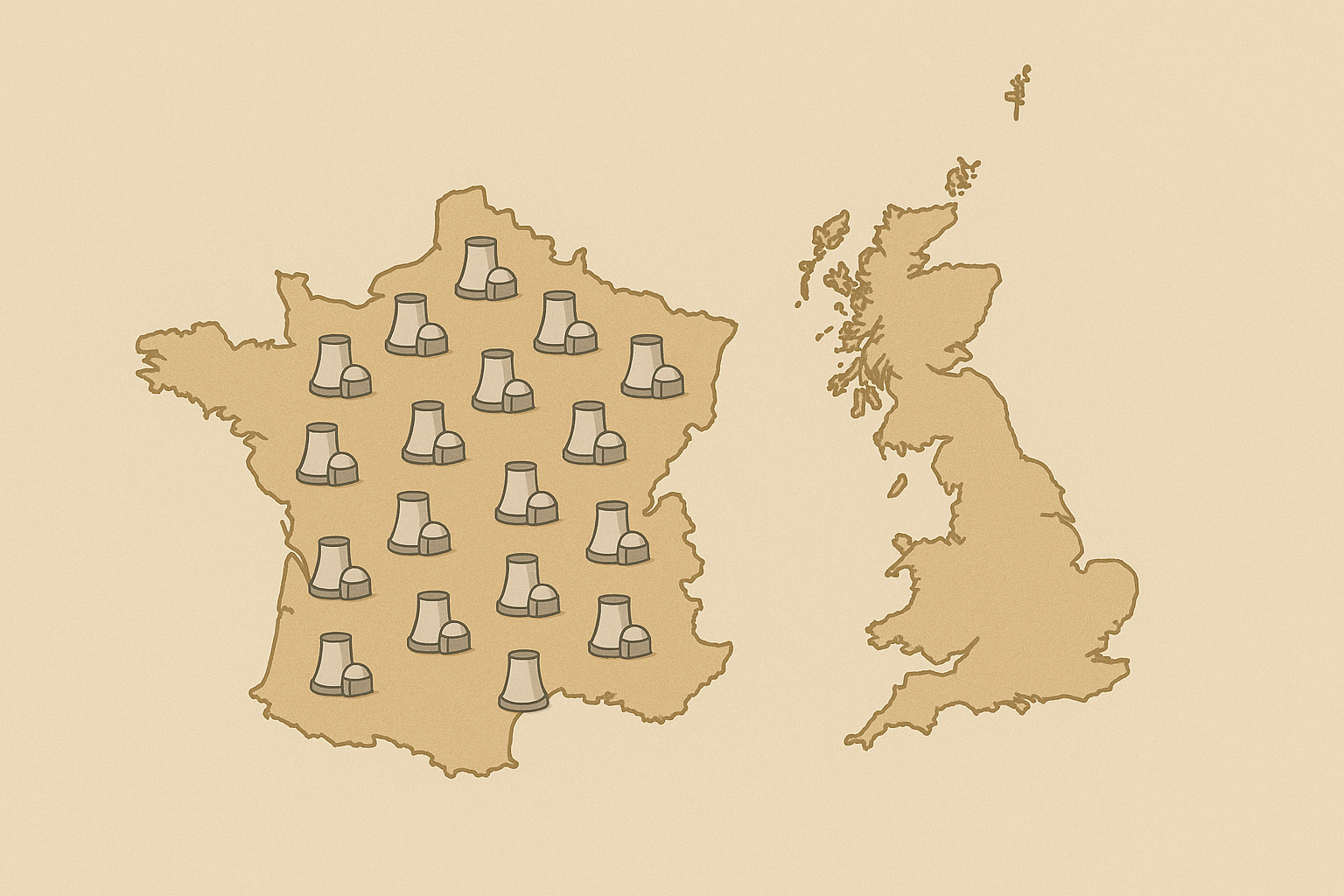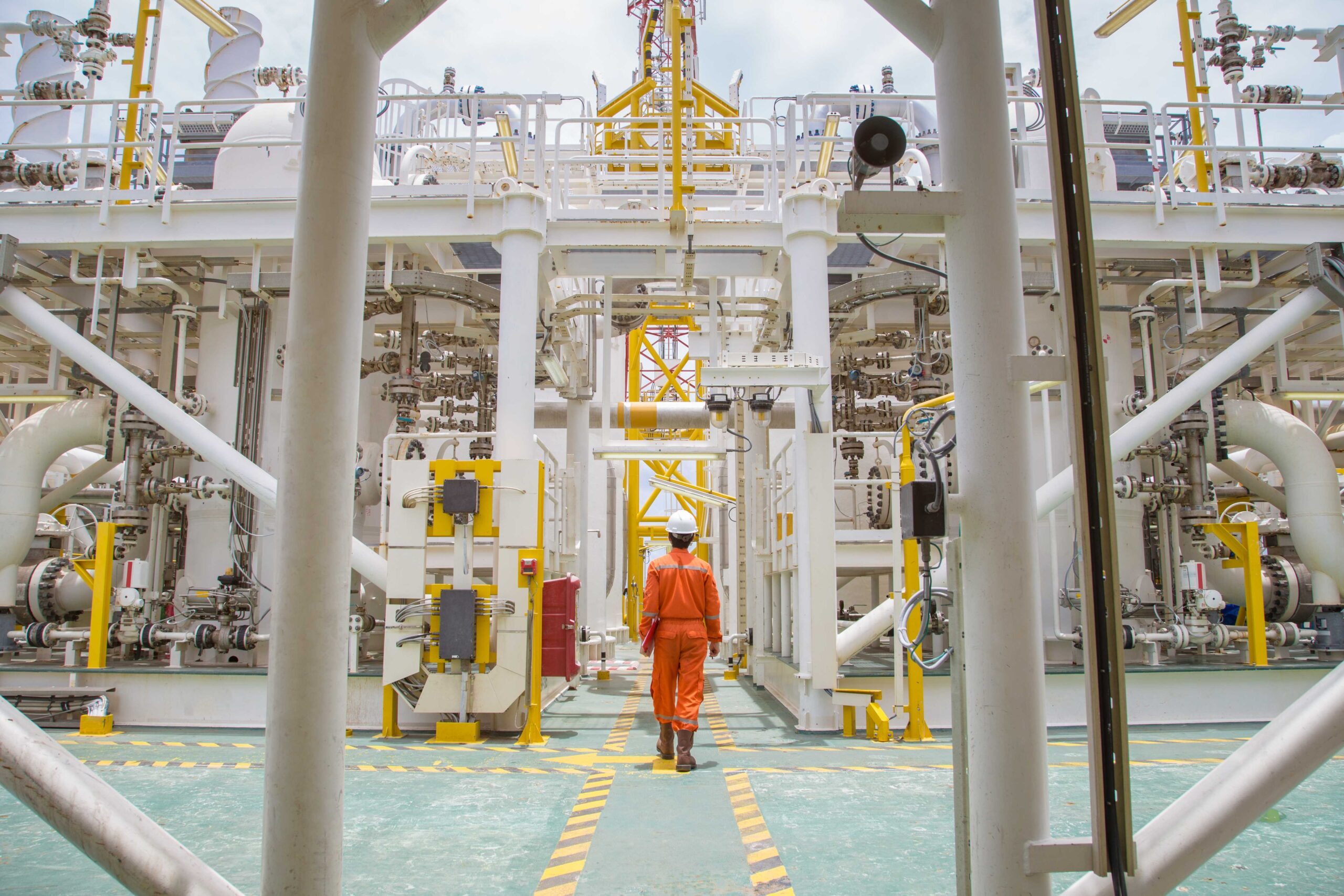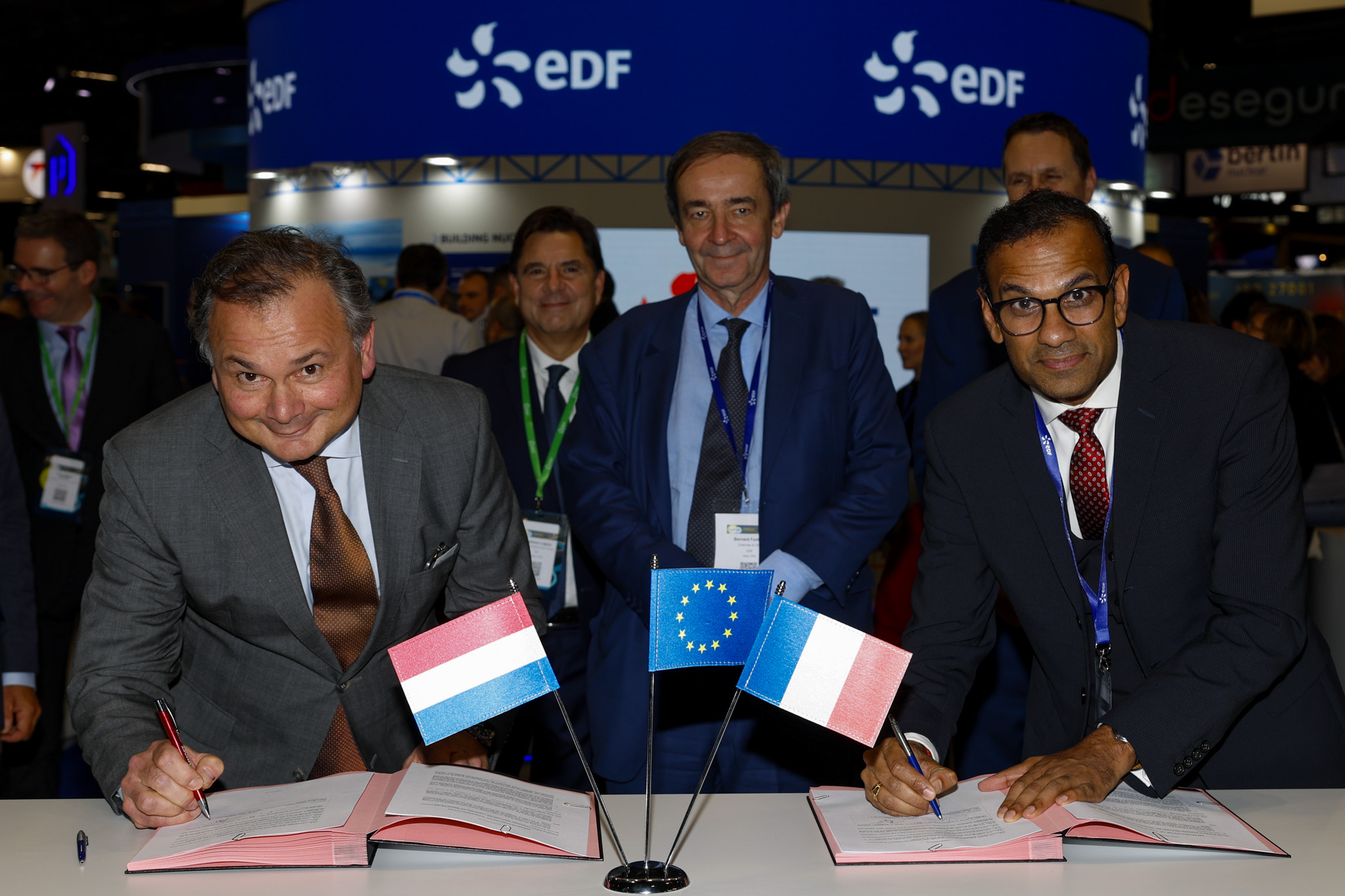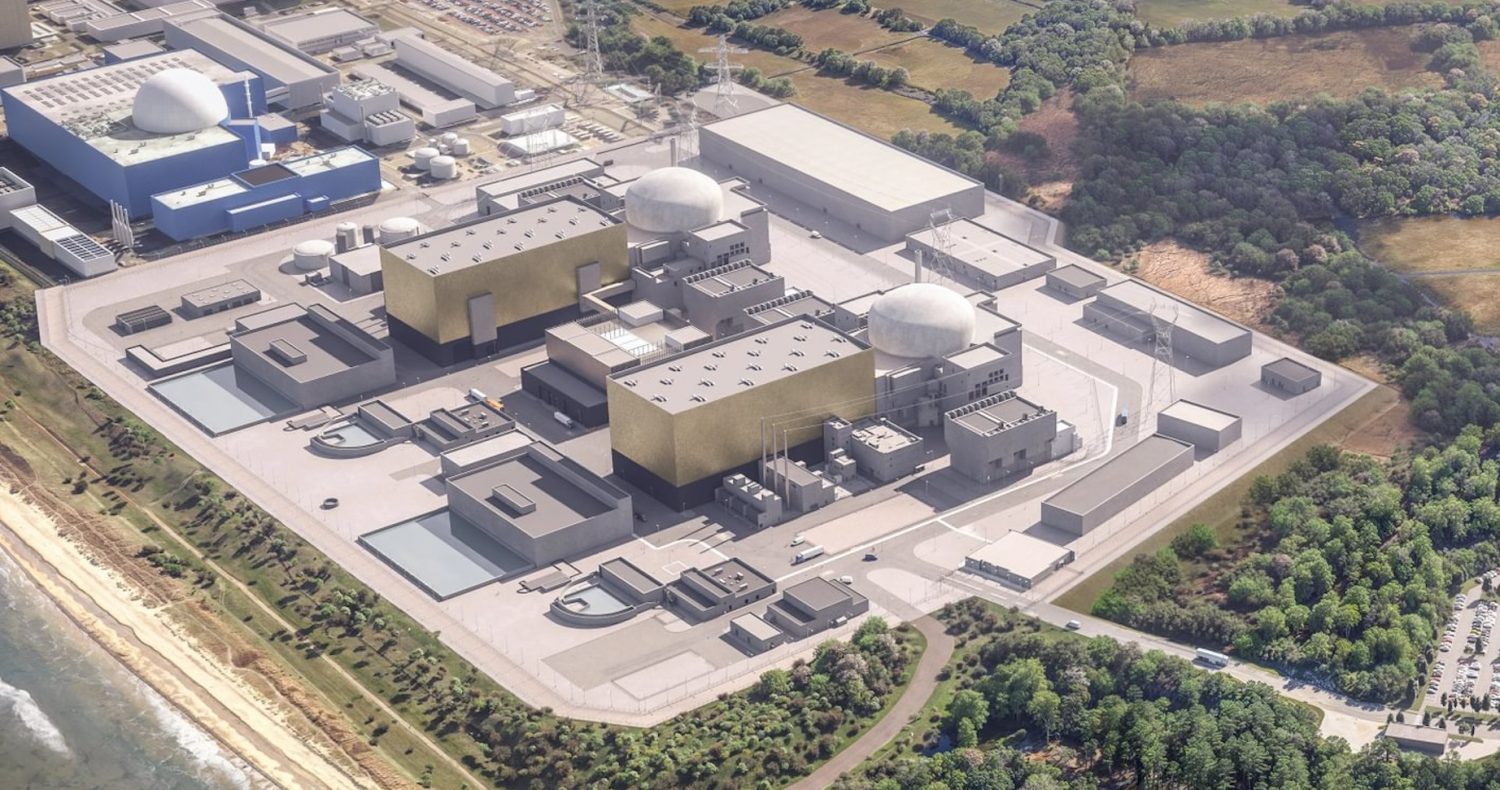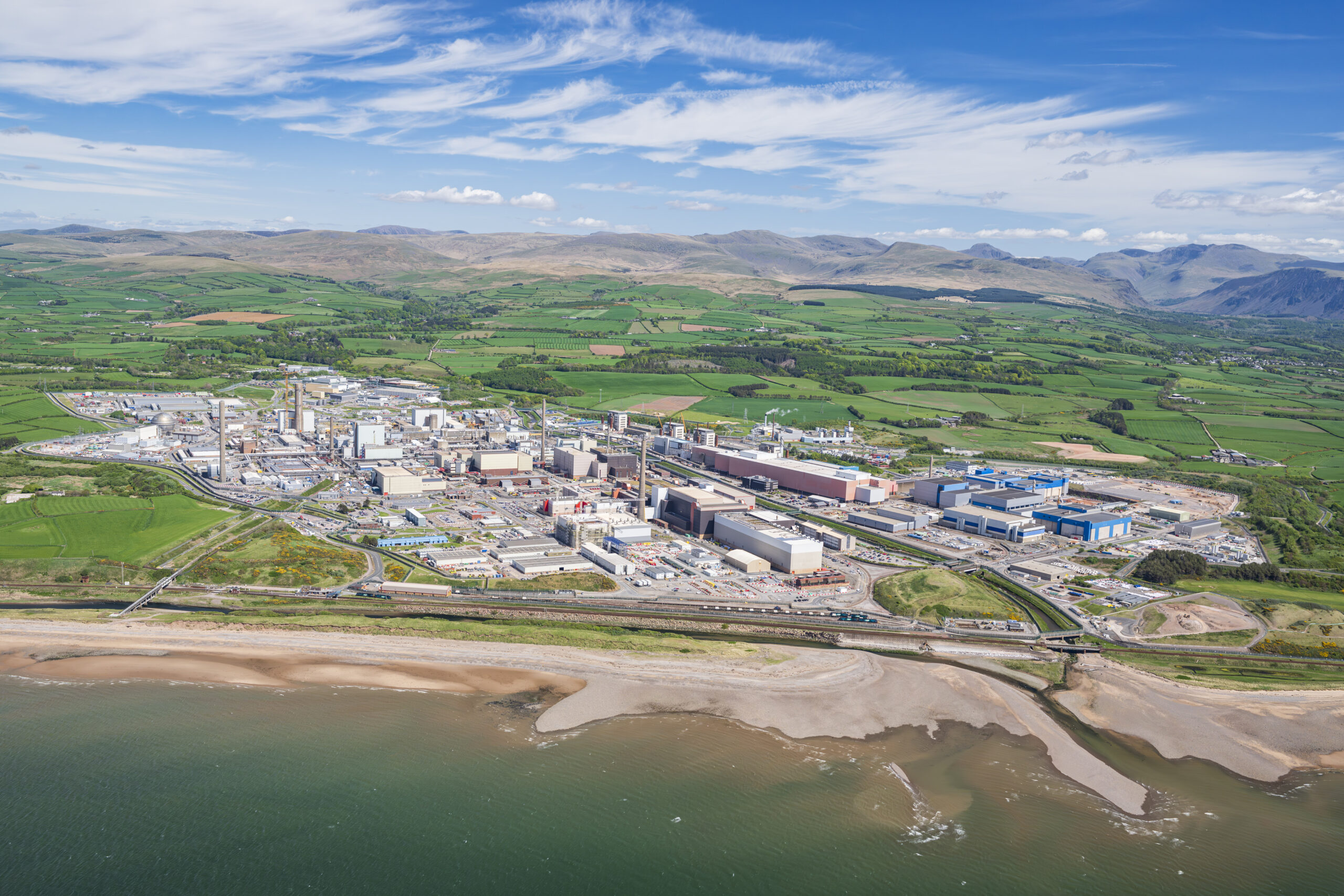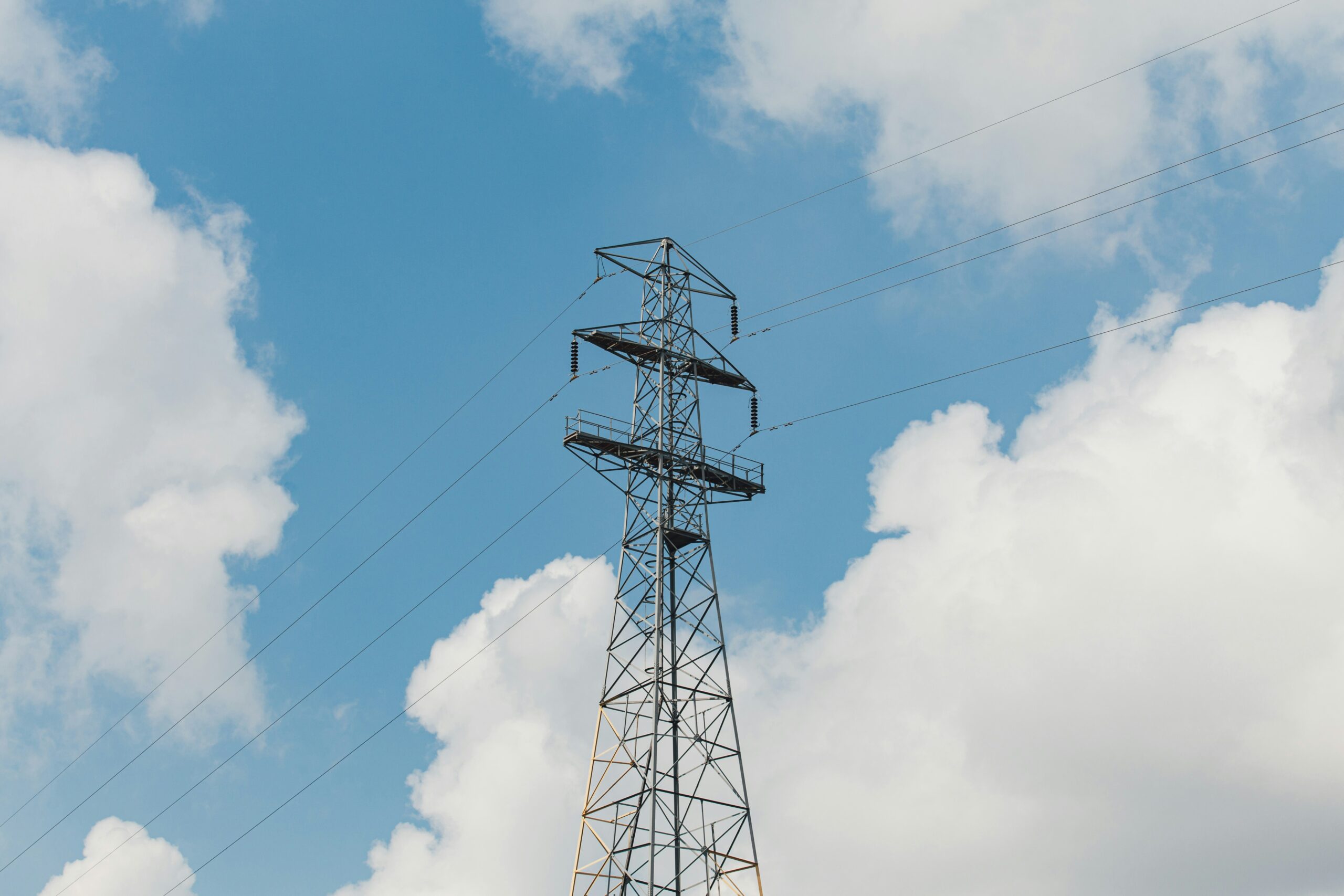France has 63 GW of installed nuclear capacity from 57 reactors, supplying around 70% of the country’s electricity. That is ten times more nuclear capacity than we have in the UK. Put simply, French nuclear power generates more electricity than the entire GB grid.
To illustrate, we looked at grid data from a single day in October. French nuclear output fluctuated between 38 and 45 GW, averaging 43 GW.[1] Britain’s total electricity generation, from all sources, ranged from 27 to 40 GW, averaging 34 GW.[2]
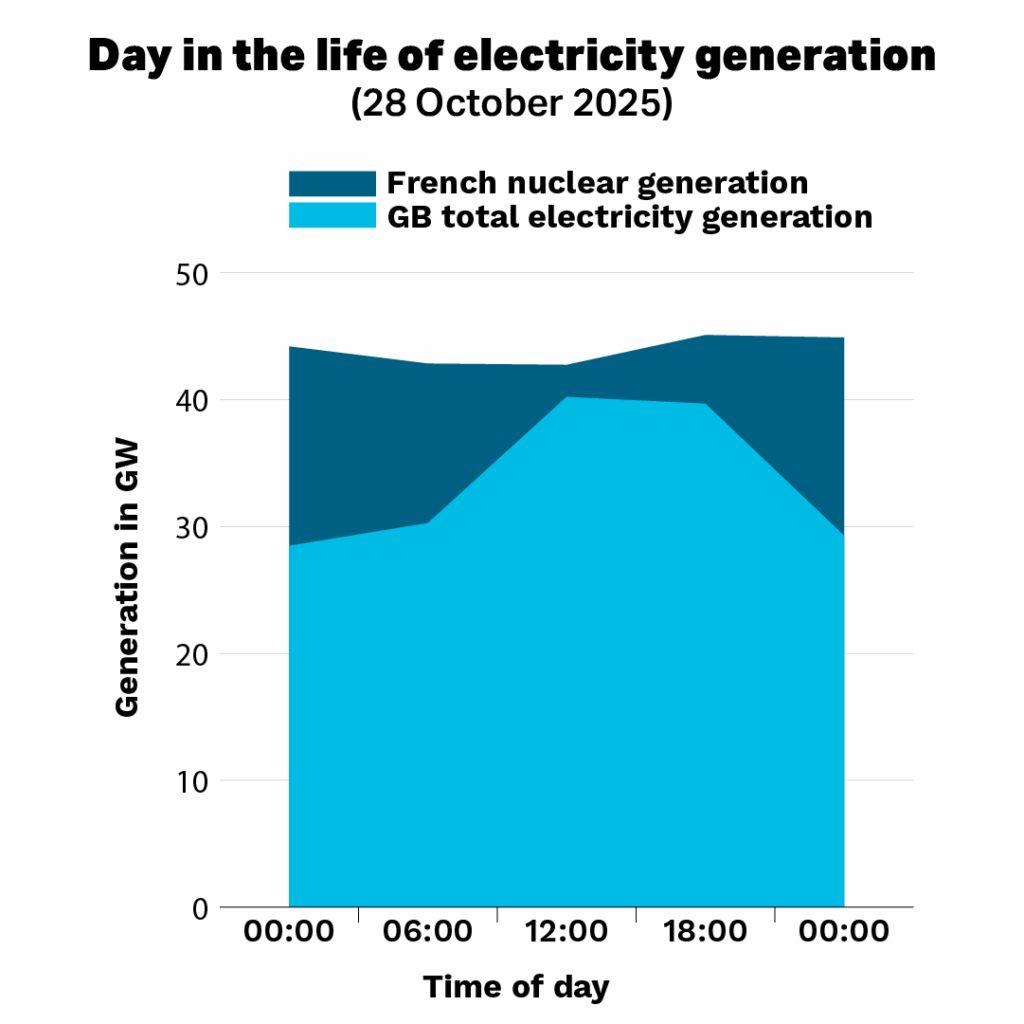
The result is that France’s electricity system is cheaper, cleaner, and more widely electrified than Britain’s. The average industrial electricity price in France is £69/MWh, compared to £168/MWh in the UK, and last year the carbon intensity of French power dropped to just 21.3 gCO₂/kWh[3], versus 125 gCO₂/kWh in the UK.
France does not have to rely heavily on gas to manage peaks and stabilise the system, with gas making up only 3% of the country’s power mix last year. It means that gas sets the benchmark electricity price in the France only 7% of the time. In the UK it’s 97%.
Because nuclear made power cheaper and more abundant, France has been able electrify more of its economy. Far more homes use electric heating instead of gas, and industries and data centres can operate with lower emissions while staying cost-competitive. Because French electricity remains low-cost to generate, France is the world’s largest net exporter of electricity, earning over €5 billion per year selling clean power to its neighbours. When clean power is abundant and dependable, it becomes the natural choice.
With nuclear as its anchor, the French grid can bring renewables online when conditions allow while staying stable. And far from being inflexible, French reactors routinely shift output by 15 GW or more in a single day, matching supply to demand while keeping emissions low. This makes French nuclear Europe’s largest source of grid flexibility, as well as Europe’s largest source of electricity and clean power, and its largest source of grid stability and inertia support.
How did France do it? It was the product of a plan license, replicate and build en masse a fleet of large-scale nuclear reactors. It was deliberate policy to compensate for a lack of natural resources with a relentless drive for reliable, homegrown, affordable power insulated from volatile global fuel markets.
And France is coming back to its roots. In 2022, the government committed to six new large-scale reactors and is considering a further eight. This is not looking backwards – it is restoring a strategy that works.
Britain needs these same advantages as it decarbonises homes, transport, industry and digital infrastructure. The French example shows that nuclear power deployed consistently and at scale provides the secure foundation on which the wider clean energy system can grow.
Rebuilding our nuclear programme with standardised designs and long-term planning is how we lower bills, strengthen energy security, and enable deep electrification across the economy.
France has shown that a clean, secure, affordable power system is achievable. Britain can choose to build one too.
[1] RTE, https://www.rte-france.com/en/home
[2] NESO, https://www.neso.energy/data-portal/historic-generation-mix/historic_gb_generation_mix
[3] https://sfeninenglish.org/france-electricity-record-2024-low-carbon/
 Iolo James is the NIA’s Head of Communications.
Iolo James is the NIA’s Head of Communications.
Back to the hub
